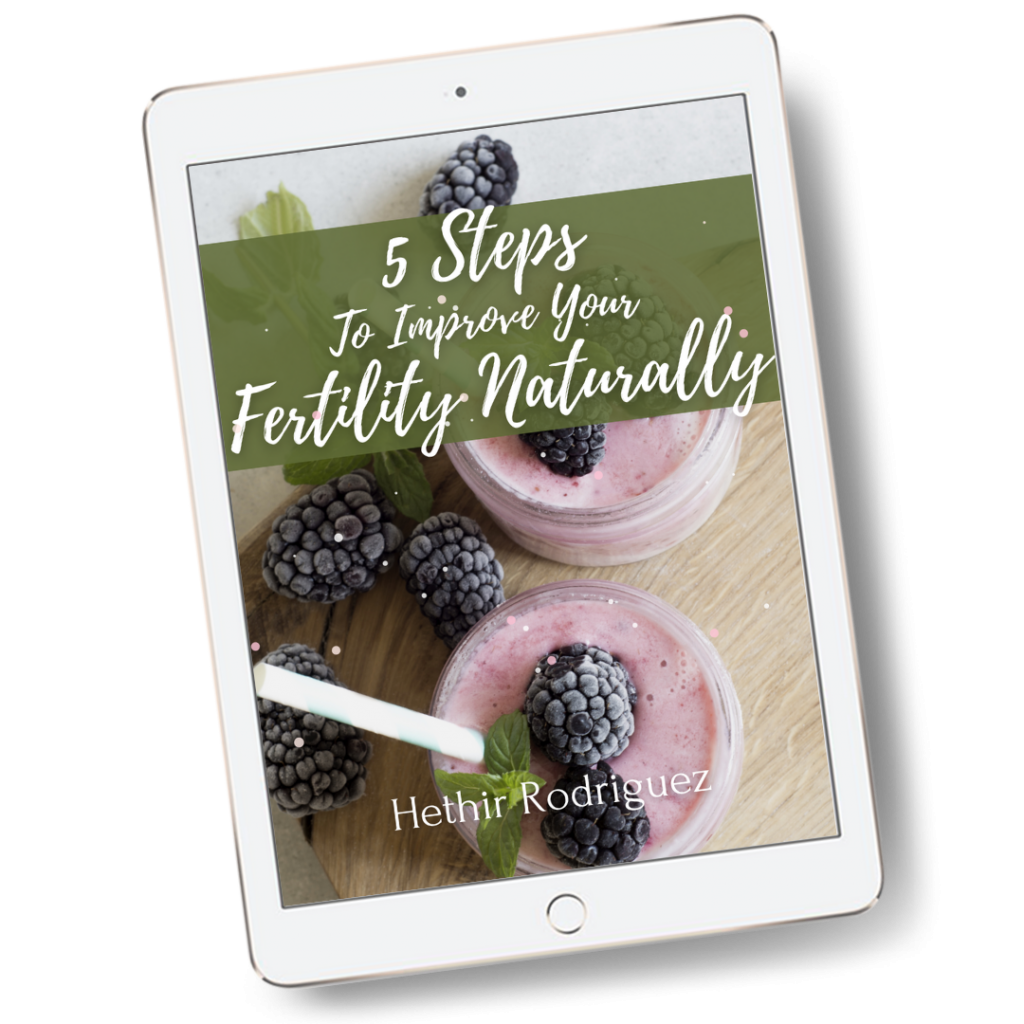Understanding the hormone-like action of herbs can be very confusing. Our customers, clients, and readers frequently reach out to us to express their concern about using herbs that have the potential to impact hormone levels, specifically estrogenic herbs and their impact on estrogen levels. In order to promote healthy estrogen levels within our bodies, we have to consider how herbal phytoestrogens protect us from harmful xenohormones (toxins) and estrogen dominance and, in turn, support overall hormonal balance.
What Are Phytoestrogens?
Phytoestrogens (or plant estrogens) are naturally present in many plants and foods in the legume family. While they are not the same as human hormones, some phytoestrogens are similar to and behave like hormones the body makes naturally.
Types of Phytoestrogens & Their Actions
Phytoestrogens tend to balance estrogen, with estrogenic or anti-estrogenic effects to match what the body needs.
A direct plant estrogen binds to hormone receptors. Their chemical structure is similar to human hormones. Most are quite gentle. For example, some research suggests phytoestrogens are only 1/400th to 1/1000th of the potency of your naturally circulating estrogen. Because they are low in potency, when they bind to receptor sites, the net effect for a lot of women is lower estrogen levels. For women with very low estrogen, phytoestrogens can modestly shore up levels by binding to estrogen receptor sites.
Phytoestrogens may even protect the body against xenoestrogens (man-made hormone mimics), also known as xenohormones. Today, excess estrogen (or estrogen dominance) is a growing problem for women. This is in large part because of the abundance of xenoestrogens coming into our bodies from pesticides, hormone-injected animal foods, plastics, commercial body care products, polluted water, and hormone-containing drugs.
Phytoestrogens can bind to hormone receptor sites before the xenoestrogen, blocking its harmful activity. In one test, Royal Jelly inhibited the BPA-induced growth of breast cancer cells (bisphenol A, a xenoestrogen from plastic).
However, not all phytoestrogens are direct plant hormones that bind to receptor sites in the body. Many of the herbs that we call phytoestrogens are actually hormone mimics, balancers, or endocrine tonics. These plants mimic hormones or encourage the endocrine system to produce normal levels of its own hormones naturally.
Top Phytoestrogen, Hormone Mimic & Endocrine Tonic Plants
Red Clover (Trifolium pratense)
*direct strong phytoestrogen
Contains: coumestans (probably the strongest known phytoestrogen), isoflavones, lignans, and lactones
Dong Quai (Angelica sinensis)
*direct phytoestrogen
Contains: beta-sitosterol
Licorice root (Glycyrrhiza glabra)
*direct phytoestrogen
Contains: beta-sitosterol
Hops (Humulus Lupulus)
*direct phytoestrogen
Contains: the potent phytoestrogen 8-prenylnaringenin, which may cause menstrual problems in very high amounts. Hops are safe in formulas or in moderation in the diet.
Ginseng – American Ginseng (Panax quinquefolius or P. quinquefolius) and Asian Ginseng (Panax ginseng or P. ginseng)
*direct phytoestrogen activity
Contains: beta-sitosterol and has mild testosterone-mimicking effects
Flax seed (Linum usitatissimum)
*direct phytoestrogen
Contains: lignans with mild estrogenic activity
Wild Yam (Dioscorea villosa)
*hormone balancer and mimic
Contains: the saponin diosgenin, a precursor material for progesterone
Vitex (Vitex agnus-castus)
*endocrine tonic, hormone mimic
Regulates pituitary activity, involved in the hormonal feedback loop. Increases progesterone production and natural production of luteinizing hormone.
Rehmannia (Rehmannia glutinosa)
*direct phytoestrogen, endocrine tonic
Contains: beta-sitosterol
Black Cohosh (Actaea racemosa)
*direct phytoestrogen.
Contains: isoflavones – Some herbalists believe Black Cohosh affects the hypothalamus, the body’s temperature regulating system.
Maca (Lepidium meyenii)
*endocrine tonic and fertility superfood
Contains: alkaloid glucosinolates, which affect fertility for both men and women
Royal Jelly
*direct phytoestrogen, hormone mimic, fertility superfood
Contains: folic acid and arginine, which support fertility in both sexes
Tribulus (Tribulus terrestris)
*endocrine tonic, hormone mimic
Contains: saponins, which can benefit male and female reproductive health
Fo-ti (Fo Ti Tieng, He Shou Wu, Polygonum multiflorum)
*direct phytoestrogen
Contains: stilbene glucosides, anthraquinone glucosides, is high in the minerals iron and zinc, and lecithin. In vitro research shows the estrogen activity of Fo-ti is 1/300th the strength of 17 beta estradiol – equal to that of soy and Red Clover.
Soybeans
*direct phytoestrogen
Contains: isoflavones, genistein – High doses of soy isolates or processed soy foods may be problematic. (See “What about soy?” below for more information about soy and fertility)
Fertility Benefits of Phytoestrogens
Phytoestrogens play a critical role in supporting fertility. For instance, a woman with a thin uterine lining may benefit from using Red Clover or Dong Quai short term, which may help to shore up low estrogen and build the blood. Maca and Royal Jelly are also rich in fertility nutrients, known to support healthy uterine muscle and lining.
For women with absent or irregular periods, phytoestrogen-containing Black Cohosh may stimulate the uterus and help normalize menstrual flow. Women with premature ovarian failure or unexplained infertility may benefit from phytoestrogens because they have the potential to bring balance to the reproductive system. This is particularly true for the endocrine tonic, Vitex. Vitex has been shown to help lengthen the luteal phase and encourage normal progesterone production, without being a source of progesterone itself.
What About Soy?
Fermented soy foods like miso and tempeh are normally well tolerated as part of a healthy, balanced Fertility Diet. Fermented soy is highly enzyme active and digested quickly. Most of the phytoestrogen potential in fermented soy is limited because the body metabolizes and eliminates it so fast.
On the positive side, research finds that consuming soy as part of a balanced diet may reduce symptoms of menopause, protects the heart, and possibly lowers endometrial and breast cancer risk.
However, there is a darker side to soy. A heavy soy diet with excessive processed soy (think soy hot dogs, soy drinks, soy formula) can affect the thyroid, decrease mineral absorption, and may block fertility. Products containing isolated soy isoflavones may be especially problematic. These types of products contain phytoestrogens in much higher concentrations than traditional whole-food sources.
One in vitro study reveals that genistein (a soy isoflavone) increases the growth of estrogen-dependent breast cancer cells. Other studies dispute these findings, but it may be possible that very high doses of soy isoflavones or other phytoestrogens could aggravate certain types of breast cancer.
Further, research shows animals fed a soy-based diet can experience fertility problems. A study published in the Journal of Urology reveals that exposure to the soy isoflavone genistein affects fertility in male rats, lowering their testosterone level and disrupting sexual behavior. Other data link using soy-based infant formulas to premature puberty. Additionally, as I mentioned, an excess of soy can inhibit thyroid activity, a fertility blocker in men and women.
The Wisdom of the Whole Plant
Although we still have a lot to learn about how phytoestrogens interact with the reproductive system, the majority of whole herbs containing phytoestrogens are as safe to take as foods. Whole plants work through our digestive system, eliminating much of the potential for side effects or toxicity.
When plant components are altered or boosted chemically, you may start to see some side effects because this approach is more drug-like in nature. Avoid large doses of isolated phytoestrogen products, especially soy isoflavones. A growing body of evidence suggests these substances may affect fertility or impact cancer risk.
The best phytoestrogen formulas come from experienced, traditional herbalists who are skilled in developing gentle, balanced combinations. For fertility purposes, the whole plant really provides the most benefit with the least potential for side effects.
- Markiewicz L., Garey J. Adlercreutz H., Gurpide E. (1993) In vitro bioassays of non-steroidal phytoestrogens. Journal of Steroid Biochemistry and Molecular Biology. 45: 5: 399-405. Retrieved from: https://www.sciencedirect.com/science/article/abs/pii/096007609390009L
- Hsieh C.Y., Santell R.C., Haslam S.Z., Helferich W.G. (1998) Estrogenic effects of genistein on the growth of estrogen receptor-positive human breast cancer (MCF-7) cells in vitro and in vivo. Cancer Research. 1 58:17 3833-8. Retrieved from: http://cancerres.aacrjournals.org/content/58/17/3833.long
- Rabat, M. (July 2002) Plant Estrogens: Natural Hope for Menopause Symptoms, Vegetarian Times.
- Tilgner, S. Phytoestrogens.(n.d.) Retrieved from: https://www.planetherbs.com/theory/phytoestrogens.html
- Nakaya M., Onda H., Sasaki K., Yukiyoshi A., Tachibana H., Yamada K. (2007 Jan) Effect of royal jelly on bisphenol A-induced proliferation of human breast cancer cells. Bioscience, Biotechnology, Biochemistry. 71(1):253-5. Retrieved from: https://www.jstage.jst.go.jp/article/bbb/71/1/71_60453/_article
- Weed, S. (n.d.) Menopausal Years, the Wise Woman Way. Retrieved from: http://www.susunweed.com/Article_Menopausal_Years.htm
- Setchell K.K.D., Gosselin S.S.J., Welsh M.M.B., Johnston J.J.O., Balistreri W.W.F., et al. (1987) Dietary estrogens – a probable cause of infertility and liver disease in captive cheetahs. Gastroenterology. 93:225–233. Retrieved from: https://www.gastrojournal.org/article/0016-5085(87)91006-7/pdf?referrer=https%3A%2F%2Fwww.ncbi.nlm.nih.gov%2F
- Patisaul, H., Jefferson, W. (2010) The pros and cons phytoestrogens. Frontiers in Neuroendocrinology, 31(4): 400–419. Retrieved from: http://www.ncbi.nlm.nih.gov/pmc/articles/PMC3074428/
- Okukpe, K.M., Adeloye, A.A., Belewu, M, Annongu, A.A. (May 2012) Investigation of Phytohormonal Potential of Some Selected Tropical Plants, Research Journal of Medicinal Plant 6(6):425-432. Retrieved from: https://www.researchgate.net/publication/269471668_Investigation_of_Phytohormonal_Potential_of_Some_Selected_Tropical_Plants
- Milligan S.R., Kalita J.C., Heyerick A., Rong H., De Cooman L., De Keukeleire D. (June 1999) Identification of a potent phytoestrogen in hops (Humulus lupulus L.) and beer. The Journal of Clinical Endocrinology and Metabolism. 84(6):2249-52. Retrieved from: https://academic.oup.com/jcem/article/84/6/2249/2864760
- Wisniewski, A., Klein, S., Lakshmanan Y., Gearhart, J. (April 2003) Exposure to genistein during gestation and lactation demasculinizes the reproductive system in rats. Journal of Urology, 169:1582-1586. Retrieved from: http://www.sciencedirect.com/science/article/pii/S0022534705638244
- Barron, J. Benefits of Soy and Soy Protein Dangers. Natural Health Newsletter 9/11/2012. Retrieved from: http://jonbarron.org/article/benefits-dangers-soy-products#.Vyl7qj9mlvo
- Pick, M.. Phytotherapy: The Key To Hormonal Balance. Retrieved from: https://www.womentowomen.com/hormonal-health/phytotherapy-the-key-to-hormonal-balance/
- Oerter K.K., Janfaza M., Wong J.A., Chang R.J.. (2003, Sept.) Estrogen bioactivity in fo-ti and other herbs used for their estrogen-like effects as determined by a recombinant cell bioassay. The Journal of Clinical Endocrinology and Metabolism;88(9):4077-9. Retrieved from: https://academic.oup.com/jcem/article/88/9/4077/2845682
- Sahelian, R., (2015, August) Fo-Ti herb and root health benefit, extract and supplement – Chinese herbal medicine used for hair health, does it help with hair growth? RaySahelian.com. Retrieved from: http://www.raysahelian.com/fo-ti.html
- Kilgour, G., (2009) Fo ti root. Secrets of Longevity. Retrieved from: http://www.secrets-of-longevity-in-humans.com/fo-ti-root.html





